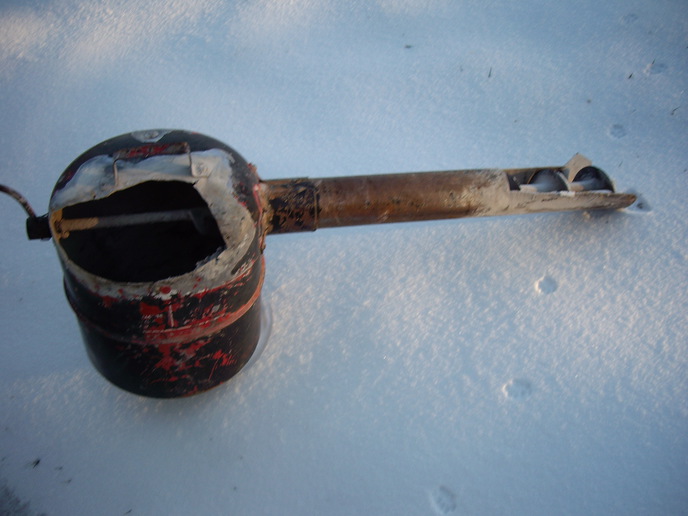You should upgrade or use an alternative browser.
- Thread starter ohiojim
- Start date
Mark - IN.
Well-known Member
Good luck, be careful.
Mark
gtractorfan
Well-known Member

old popper
Well-known Member
db4600
Well-known Member
Jaden
Member
- Location
- Eastern Nebraska
Mike(NEOhio)
Well-known Member
- Location
- Newbury, Ohio
Russ from MN
Well-known Member
- Location
- Bemidji MN
Stephen Newell
Well-known Member
Using dry wood and not being stingy with the heat is key. "Give some heat to the chimney" every morning to get a good draft going ad really warm up the chimney. Control the stove temp by the amount of wood you put in-not by throttling back the air.
Donald Lehman
Well-known Member
(quoted from post at 12:23:05 12/23/16) When I had a tile chimney, The chimney sweep chemicals would keep the creosote deposits dry, crumbly and greyish colored and very easy to clean out. If I didn't use the stuff the creosote was much worse and harder to brush out. I have the triple wall SS pipe now and I use the chimney sweep packets about once every two weeks. At the end of the heating season, I have about a quart of dry grey ashes in the two elbows combined. Running a brush down the pipe produces almost nothing. They won't keep a chimney clean to the point you don't have to brush the chimney, but in my experience they help keep the creosote converted to dry grey ash. [b:79f84f9f3f]I've also seen chimneys that the stuff was no help at all in. All you can do is try it in your setup and see if it helps or not.[/b:79f84f9f3f]
Probably the best advice given Don!
buickanddeere
Well-known Member
Creosote occurs when the fire box is jammed full of wood and the air supply checked back when attempting to make the time longer between stove filling.
Running a dampered down full fire box is the same way charcoal is purposely manufactured. Wood under high heat and limited oxygen drives the wood gasses unburned up the chimney. Now these gasses cool below the "dew point" and the vapours condense on the inside of the stack as creosote and tar.
Th way to avoid creosote is burn smaller amounts of dry wood in a hot bright clear fire with air rather than smoldering.
showcrop
Well-known Member
Like Jaden and others say, get it good and hot once every day so that you have a "friendly" chimney fire. It may not burn very strong or make any noise but it will carry right up through to the top and clean it out good. Cleaning with brushes is good but it lulls a lot of people into false security. You can plug it back up again in just 36 hours of burning with a low draft.
Similar threads
- Replies
- 8
- Views
- 443
- Replies
- 7
- Views
- 379
We sell tractor parts! We have the parts you need to repair your tractor - the right parts. Our low prices and years of research make us your best choice when you need parts. Shop Online Today.
Copyright © 1997-2024 Yesterday's Tractor Co.
All Rights Reserved. Reproduction of any part of this website, including design and content, without written permission is strictly prohibited. Trade Marks and Trade Names contained and used in this Website are those of others, and are used in this Website in a descriptive sense to refer to the products of others. Use of this Web site constitutes acceptance of our User Agreement and Privacy Policy TRADEMARK DISCLAIMER: Tradenames and Trademarks referred to within Yesterday's Tractor Co. products and within the Yesterday's Tractor Co. websites are the property of their respective trademark holders. None of these trademark holders are affiliated with Yesterday's Tractor Co., our products, or our website nor are we sponsored by them. John Deere and its logos are the registered trademarks of the John Deere Corporation. Agco, Agco Allis, White, Massey Ferguson and their logos are the registered trademarks of AGCO Corporation. Case, Case-IH, Farmall, International Harvester, New Holland and their logos are registered trademarks of CNH Global N.V.
Yesterday's Tractors - Antique Tractor Headquarters
Website Accessibility Policy

